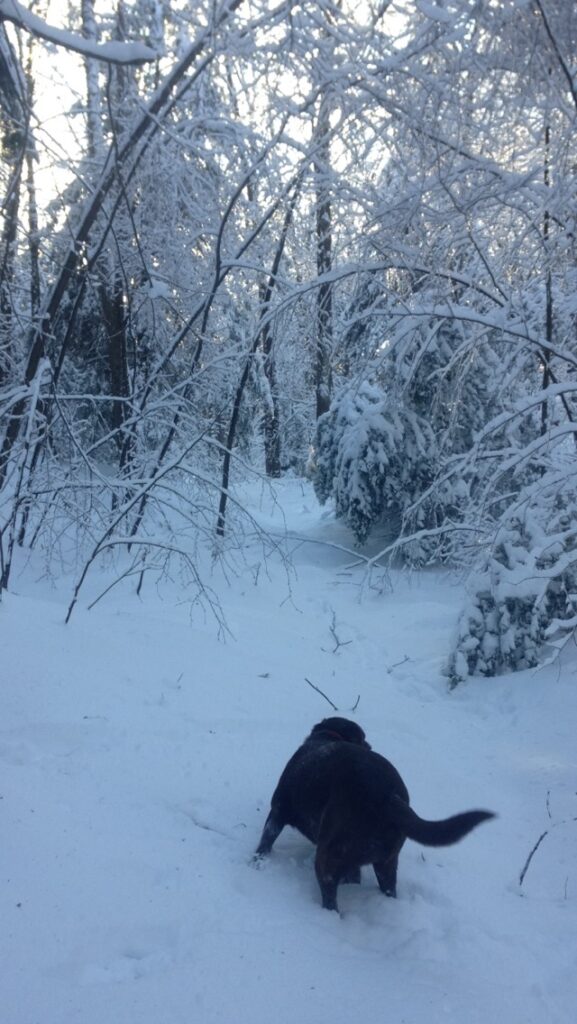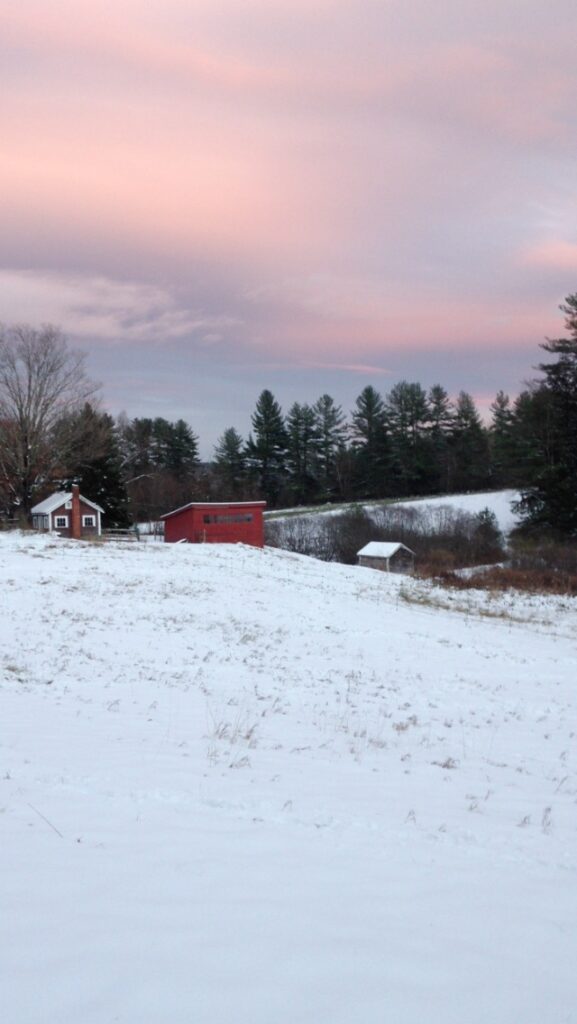This month during my visit to Centennial Woods (2/28), there was fresh snow cover. I went in the evening as it was getting dark and tracks were covered in a little bit of fresh powder. Immediately I was able to find fox tracks. The size of the prints and the gate are why I believe they belong to a fox. The tracks led towards the brook, so it could have been going to the water.
This fox likely has a den it lives in and comes out in both the day and night. It is an opportunistic feeder that will search for food at all times. It is also an omnivore, consuming things like rodents, amphibians, worms, berries, seeds, and more. One interaction I have found evidence for is foxes consuming mammals. Not today at Centennial, but another time there, I found fox scat that had fur in it. This was likely from a rodent and it shows how foxes consume small mammals. Another piece of evidence I found was a slight chew mark on a twig near the fox tracks. This shows the animal interacting with plants. I believe the chew marks were from the fox because of the close proximity to the tracks and because they were low enough down that they matched the height of a fox.
Since my last visit to Centennial Woods, some small changes have occurred. There appears to be more life; wildlife seems to be more active and some small buds are even beginning to appear on the trees. Also, visually, there is more snow cover than when I last visited. During this visit, it had snowed most of the day so there was some fresh powder.
Figure 1: Fox tracks

Figure 2: Field notes



